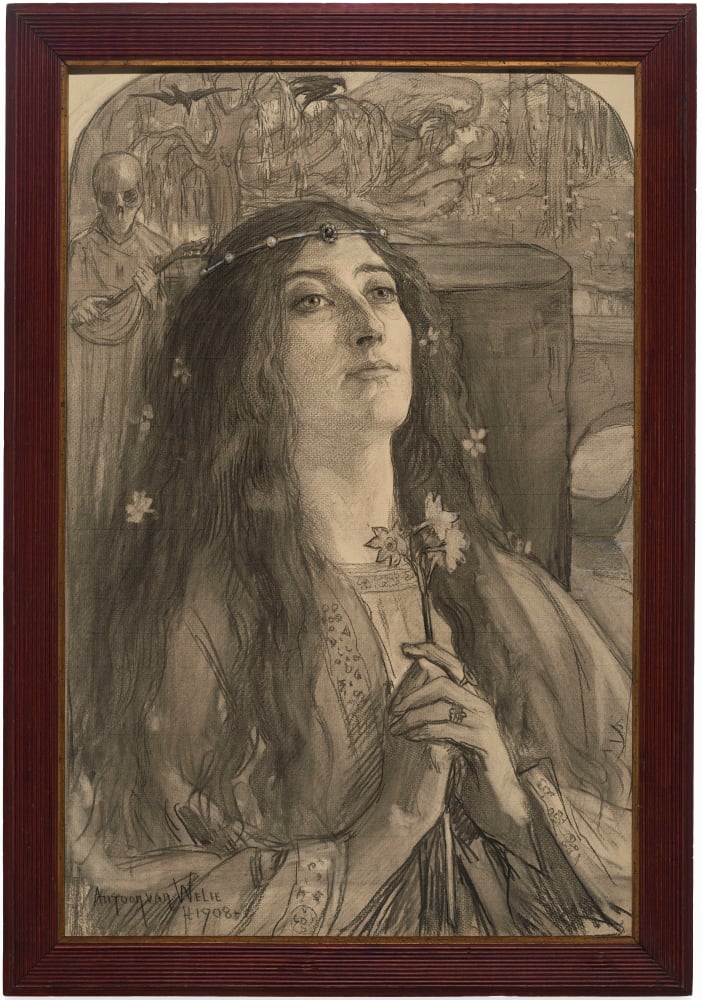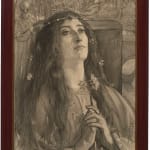Antoon van Welie (1866-1956)
Johannes Antonius (Antoon) van Welie was born in the small town of Afferden in Gelderland in the Netherlands on December 18, 1866. He studied art in Belgium and received critical acclaim in Paris early on. He lived between Paris, London and Rome, where he had a studio in Vatican City and received Papal commissions. A protagonist of the international Symbolist movement in his early career, Van Welie became the most celebrated Dutch portraitist, whose portraits were in demand amongst high society and celebrities throughout Europe such as Sarah Bernhardt and Isadora Duncan.[1] He exhibited at the galleries of Bernheim Jeune and George Petit in Paris, while amassing a substantial collection of old master paintings.[2] Eventually, Van Welie settled in The Hague where he remained until his death on September 24th, 1956.
Van Welie’s symbolist style is unusual in Holland where the general taste is still focused on the traditional painters from The Hague school. In contrast, Van Welie’s interest in mythology and fairy tales however, reveals more common interests with artists such as Fernand Khnopff, Franz von Stuck and his countryman Jan Toorop. Love and ill-fated yearning became Van Welies primary subject matter, inspired by wide ranging sources from Wagner’s tragic opera Tristan and Isolde to Shakespeare’s heroine Ophelia; any contemporary play or poem could become a source.
The present Echo derives from Ovid’s Metamorphoses. The talkative nymph Echo was much admired by Venus for her magnificent voice. After misleading Juno into believing that her husband Jupiter is in town, Juno curses Echo by making her able only to finish a sentence, but not to start one; hence unable to say anything on her own.
The moment depicted is after Echo has fallen in love with Narcissus, who rejects her. Echo prays silently to Venus, who disembodies her until she remains a voice and is heard by all, the aural phenomenon we know today as echo. Narcissus, deeply infatuated with his own reflection in the water, wastes away with love for himself, echoing the manner in which Echo did earlier. After his body has fully disappeared, the flower that bears his name sprung up in its place.
[1] P. Roelofs & K. van Lieverloo, Antoon van Welie. De laatste decadente schilder 1866-1956, Zwolle/Nijmegen 2007, p. 8 & 34.
[2] Sale Collection Antoon van Welie, 7 April 1936, Amsterdam, Mak van Waay, with over 150 old masters.
Provenance
Studio 2000, Amsterdam, The Netherlands, 1992Private collection, The Netherlands
Christie’s, Amsterdam, 13-14 May 2014, lot 230
Mathieu Néouze, Paris
Exhibitions
The Hague, Boussod Valadon & Cie, Tentoonstelling van schilderijen en tekeningen door Antoon van Welie, April 1908




